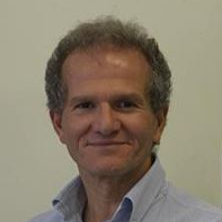Advanced Materials and Technologies for Fuel Cells
A special issue of Energies (ISSN 1996-1073). This special issue belongs to the section "A5: Hydrogen Energy".
Deadline for manuscript submissions: closed (20 October 2020) | Viewed by 47254
Special Issue Editors
Interests: electroceramics; SOFC; solid state chemistry; impedance spectroscopy; nanomaterials
Interests: electrochemistry; fuel cells; solid oxide cells; batteries; environmental electrochemistry; hydrogen storage; corrosion; corrosion protection
Interests: solid state electrochemistry; impedance spectroscopy; SOFC/SOEC; processing; electroceramics
Interests: electroceramics; processing; structural characterization; SOFC; solid state chemistry; impedance spectroscopy
Special Issue Information
Dear Colleagues,
We are inviting submissions to the Special Issue of the Energies Journal on the subject area of “Advanced Materials and Technologies for Fuel Cells”.
Fuel cells are considered the preferable candidate for replacing conventional energy technologies, thanks to their tremendous potential for improving efficiency and reducing CO2/NOx emissions. The potential applications of fuel cells systems range from transport to stationary power generation, and extend to renewable energy storage when they are used in reverse mode as electrolyzers. High-temperature fuel cells are also well suited for carbon capture and utilization (MCFC) and for power to gas processes involving the co-electrolysis of CO2 and H2O (SOFC–SOEC). Among low-temperature fuel cells, microbial cells are an excellent example of bio-compatible energy systems, and are a challenge for the near future.
Further advancements in fuel cell technology are strongly dependent on the improvement of materials properties. The improvement of the catalytic activity in both anodic and cathodic materials is the key factor enabling the use of different types of fuel (gas or liquid, hydrogen or hydrocarbons), as well as the extension of the SOFC lifetime, by lowering of the operative temperature. For advanced PEM, platinum-group-metal-free and/or nanostructured electrodes are highly recommended for use as biofuels and biogas.
This Special Issue welcomes contributions focused on experimental techniques and computational theories that can provide fundamental insights into the development of new electrode, electrolyte, interconnects, and sealing materials, as well as on the technological improvements ensured by the use of fuel cells.
Prof. Massimo Viviani
Prof. Antonio Barbucci
Prof. Maria Paola Carpanese
Prof. Sabrina Presto
Guest Editors
Manuscript Submission Information
Manuscripts should be submitted online at www.mdpi.com by registering and logging in to this website. Once you are registered, click here to go to the submission form. Manuscripts can be submitted until the deadline. All submissions that pass pre-check are peer-reviewed. Accepted papers will be published continuously in the journal (as soon as accepted) and will be listed together on the special issue website. Research articles, review articles as well as short communications are invited. For planned papers, a title and short abstract (about 100 words) can be sent to the Editorial Office for announcement on this website.
Submitted manuscripts should not have been published previously, nor be under consideration for publication elsewhere (except conference proceedings papers). All manuscripts are thoroughly refereed through a single-blind peer-review process. A guide for authors and other relevant information for submission of manuscripts is available on the Instructions for Authors page. Energies is an international peer-reviewed open access semimonthly journal published by MDPI.
Please visit the Instructions for Authors page before submitting a manuscript. The Article Processing Charge (APC) for publication in this open access journal is 2600 CHF (Swiss Francs). Submitted papers should be well formatted and use good English. Authors may use MDPI's English editing service prior to publication or during author revisions.
Keywords
- Co-electrolysis
- High conductivity electrolyte materials
- Innovative architectures
- Nano-structured electrodes
- Platinum-group-metal-free electrodes
- Electro-catalysis
- Interconnects and sealing
- Internal fuel processing
- Balance of Plant (BOP) components
- Modelling at the cell-stack-plant level
- Life cycle and thermoeconomic analysis.
Benefits of Publishing in a Special Issue
- Ease of navigation: Grouping papers by topic helps scholars navigate broad scope journals more efficiently.
- Greater discoverability: Special Issues support the reach and impact of scientific research. Articles in Special Issues are more discoverable and cited more frequently.
- Expansion of research network: Special Issues facilitate connections among authors, fostering scientific collaborations.
- External promotion: Articles in Special Issues are often promoted through the journal's social media, increasing their visibility.
- e-Book format: Special Issues with more than 10 articles can be published as dedicated e-books, ensuring wide and rapid dissemination.
Further information on MDPI's Special Issue polices can be found here.









